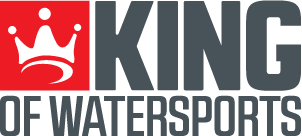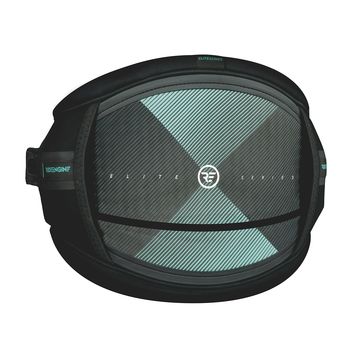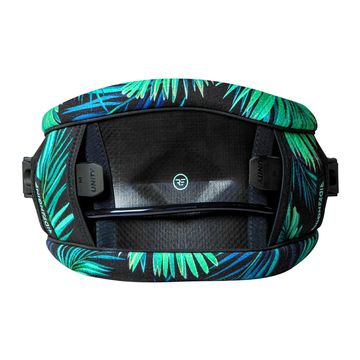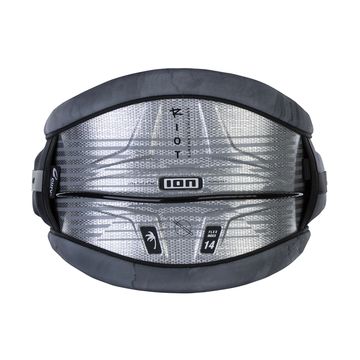Types Of Kitesurf Harness
Hard shell, soft shell, seat, flex, support, spreader bar are all words associated with harnesses here we try to look at that in more detail and find the differences in the types of harness and who they are suitable for.
When kitesurfing first started people were leashed into a kite using an old windsurf harness. Thankfully the sport has come on over the years and everything in terms of design has improved and harness are not an exception.

Not all harnesses are the same as you will find out below but they all have some parts in common and although these parts may look a little different from brand to brand they will have a very similar job and use.
A spreader to hook the kite onto.
A secure leash attachment point.
A fastening system to hold the harness in place without the spreader bar.
A size adjustment system to fit and centre the spreader bar.
Padding around the edges and areas that come into contact with the rider.
Some harnesses will have some extras, including a knife pocket and a handle pass leash attachment point, memory foam, water proofing (keeps it light) as well as much more.
Starting with the original style of harness, which is a soft shell. This harness usually has a better level of comfort and easier fit. Essentially its made from foam padding wrapped in latex and neoprene on the inside for comfort and stretch with a variety of design on the outside for style. What a soft shell harness does well is it forms to your back and the shape of your body really well and if you’re getting pulled from different angles by the kite the front of the harness will still be comfortable because there’s not anything hard that doesn’t flex digging into your side or pushing against you at an awkward angle.
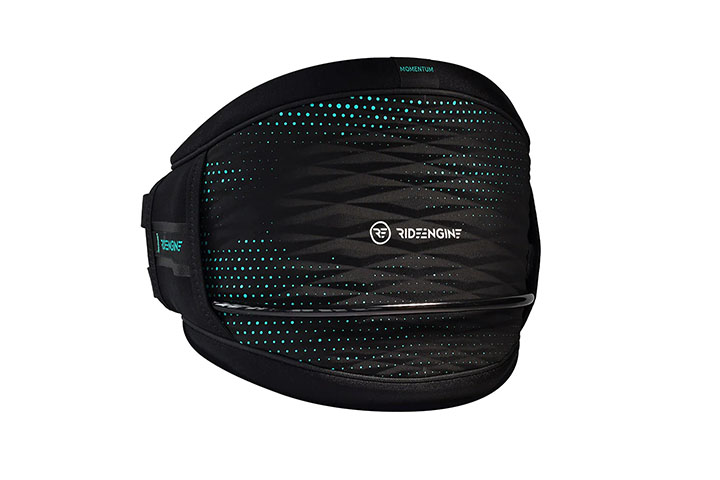
Ride Engine Momentum
You probably had a lesson in a soft shell harness as most schools use them as they do fit people of all shapes and sizes much easier than the harder shell options. Outside of people learning the soft shell harness does allow for more freedom of movement for the rider meaning freestyle and wave riders will often opt for a softer shell harness.
You probably had a lesson in a soft shell harness as most schools use them as they do fit people of all shapes and sizes much easier than the harder shell options. Outside of people learning the soft shell harness does allow for more freedom of movement for the rider meaning freestyle and wave riders will often opt for a softer shell harness.
Hard shell harnesses do exactly the same job but where they differ is that on the outer side of the harness there is a much stiffer plate. This plate reduces the flex of the harness and gives much more support. The stiffer plate comes in different materials which have different amount of flex with the stiffest being carbon. The hard shell harnesses are shaped to fit in the curve of your lower back and its much more crucial to get the right size because if its too big or too small the pull from the kite will pull the stiff plate at angles that can dig into your side. Having the correct size hard shell harness will mean the harness doesn’t really move when tightened correctly (wont ride up and no twisting) and will offer more support to you whilst riding.
Whilst these hard shell harness are rarely found on beginners they will suit most levels of ability as long as they fit correctly. The support offered is the key and a good fitting hard shell harness is hard to beat. Anyone doing big jumps will usually be in a hard shell harness to get the support from the powered up riding they are doing.
The material used in the hard plate will vary the amount of flex and weight in the harness. The top end harnesses the plate it made from Carbon for a light and stiff frame. As you go down in price the materials used on this plate tend to get softer and a little heavier but as the flex gets softer fit becomes easier.

Mystic Majestic OS
Seat Harness are the other type of harness and these are probably the smallest category of harness with most harness brands only having one or two in their line up. You may not see many people wearing a seat harness at your local kite spot and part of the reason for that is fashion – there aren’t many top riders using them except kite foil racers. A seat harness it made in a similar way to a soft shell harness and is designed so you can sit down into the power of the kite. The leg straps stop the harness riding up and the spreader bar is situated much lower.
Seat harness will often be used for people learning as it cannot ride up thanks to the leg straps and can often be the easiest/best fit for someone with a belly. All the kite surfers who like to go fast, whether racing or going for outright speed will be wearing a seat harness as it allows them to sit down into the power which helps when flying a fully powered up kite. If you do have any lower back problems this could be the best option for you.
Spreader bars come in different shapes and sizes too and they can also help with the overall fit of the harness so again its important to get the right sizes spreader bar if you have a choice.
The standard spreader is a hook that the chicken loop of the kite bar hooks onto. This is the most common spreader bar and is safe, reliable and good for everything.
For the foilers and dedicated wave riders you can get a spreader bar that allows for more rotation of the torso which really helps when riding switch or doing carve from one edge to the other. Instead of a hook you have a rope slider that the chicken loop clips directly onto.
You do need to avoid windsurf specific spreader bars. These bars have a more open hook which does not come down and back towards your stomach enough and in gusty conditions if the kite lines go slack it is possible to accidently unhook.
There is no wrong choice for anyone and the most important thing when getting a harness is that it fits correctly and that you can hook into your kite safely.
To keep your harness in top condition is is worth taking care of it.
No throwing a hard shell down on the beach.
Rinse webbing straps if your going to leave harness unused for extended period of time.
Regularly check for wear and tear.
Make sure you check out the whole range of kitesurf harnesses at King Of Watersports
Content created by King of Watersports KOW Copyright
